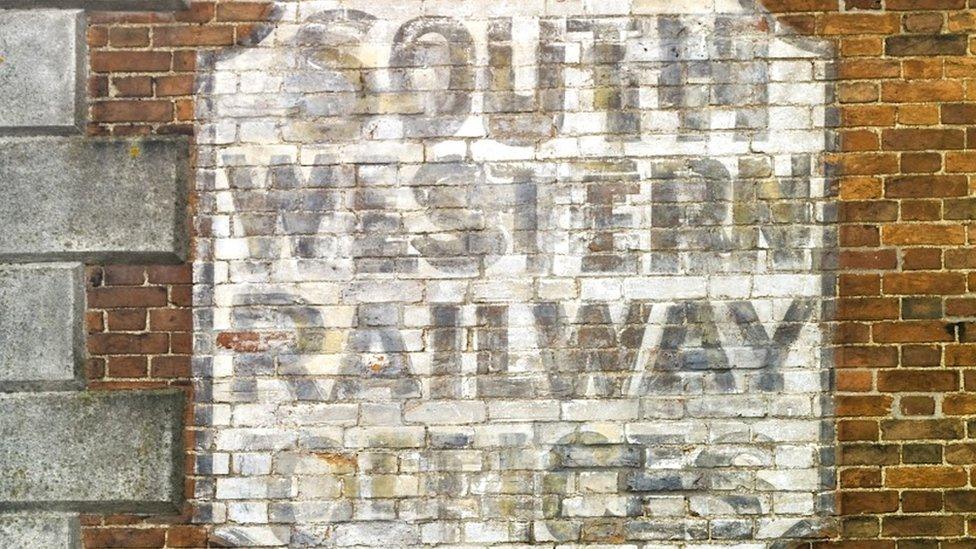Project to document city's forgotten ghost signs

The Bile Beans sign is perhaps one of the most well-known ghost signs in York
- Published
Two researchers have begun a mission to uncover the hidden histories behind York's "ghost" signs.
These are old, hand-painted advertisements which have been preserved on a building for an extended period of time.
The project, which is supported by Historic England, is being run by Dr Tyson Mitman and Maisie Wilson from York St John University.
Their research also includes mosaics, sculptures and lettering and Dr Mitman said they all provide "a window into the lives the community led at any given time".
Dr Mitman said he had been inspired to start the project after moving to York and struggling to find information about the "beautiful" old signs.
He and Ms Wilson have been documenting all their findings on a public blog and website.
They took the BBC on a tour of some of their favourite signs in the city.
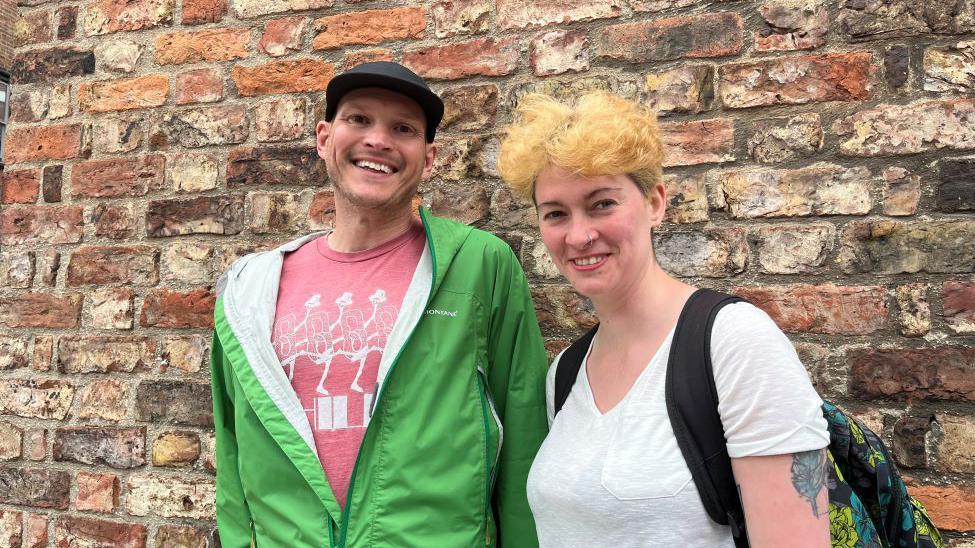
Dr Tyson Mitman and Maisie Wilson are on a mission to uncover the hidden histories behind the city's ghost signs
The first stop is a very faded sign for Mackinder Clothing on Church Street.
Ms Wilson said: "His (first) name was Wingate. I thought it was William for ages, but Wingate is so much more fun!"
The tailor Wingate Mackinder was born in 1884.
"He specialised in funeral wear and mourning wear, because in Victorian and Edwardian times it was a much bigger social ritual to mourn for months or years and you’d need special black, formal clothing."
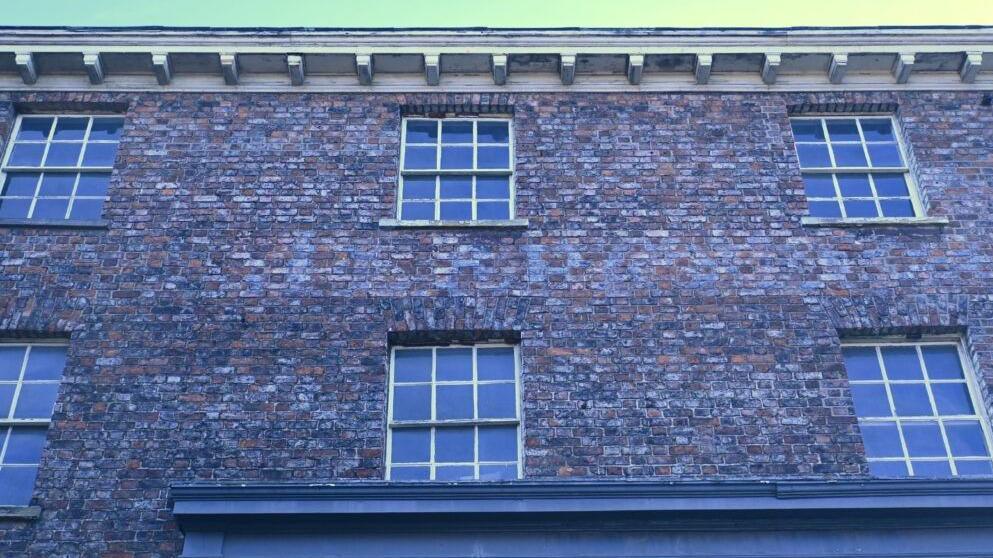
Few people might spot the W.Mackinder written high up on this building in Church Street
The tailor expanded his business through the years, Ms Wilson said.
"In World War One he became quite famous for providing clothing to the military, so they extended this sign to say 'Tailor to the War Department'."
Dr Mitman said uncovering the history behind the signs is not always straightforward.
It usually involves looking through "loads and loads of directories" which listed businesses in the city, Ms Wilson added.
Information is also found through announcements in old newspapers, tracking down records of ownership and people's memories.
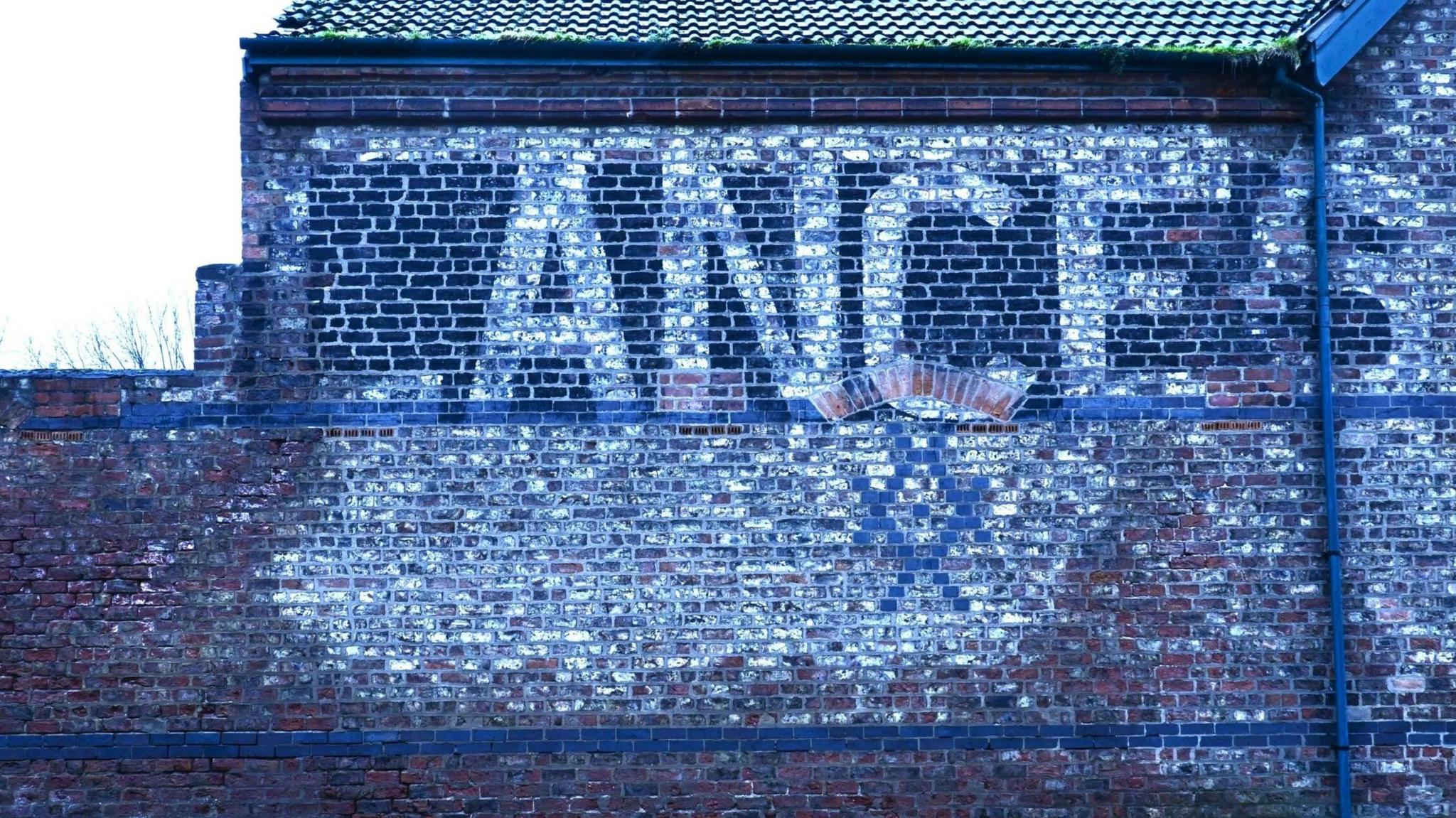
This sign on Navigation Road refers not to a business but a service
On Navigation Road there is a sign displaying only the word "Lances" which is one of Dr Mitman's favourites.
“It used to say 'Ambulances'," he said.
"It was an ambulance storage yard back when ambulances were private entities.
"It was in use from the late 1800s/early 1900s through to World War Two, before the NHS was established."
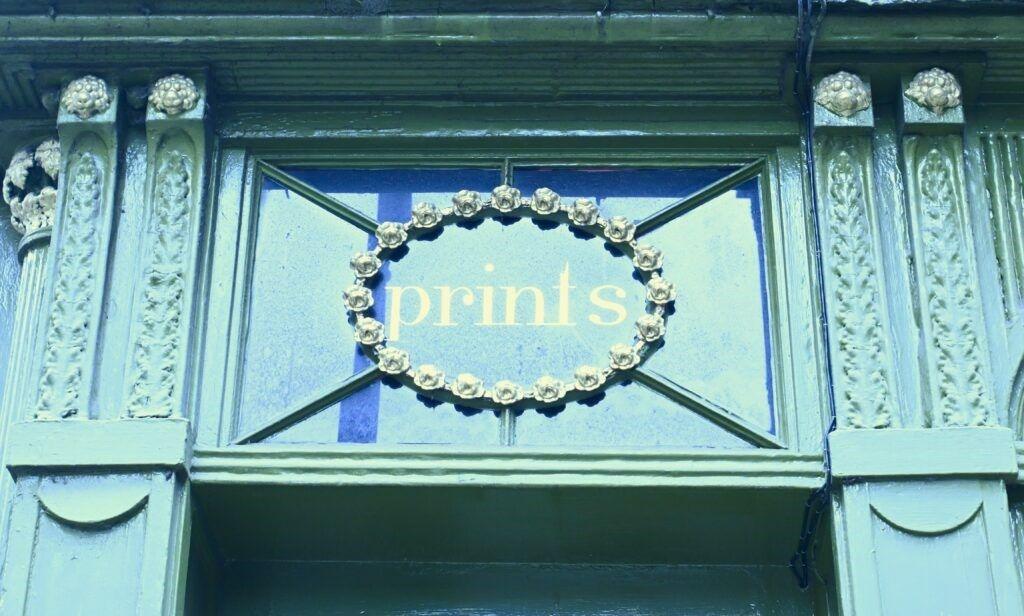
A beautiful window sign is a reminder of strict book-selling rules that once existed
Dr Mitman and Ms Wilson explained that the project is not just about faded signs from the past, but the sculptures and engravings which also survive on buildings.
In the shadow of York Minster is a short street known as Minster Gates.
Etched glass on a former bookshop and publisher is from the early 1800s, Dr Mitman explained.
"These very well-preserved ones are easy to overlook because they feel as if they are part of the modern building, the fact that they’re still there is a testament to their original production”.
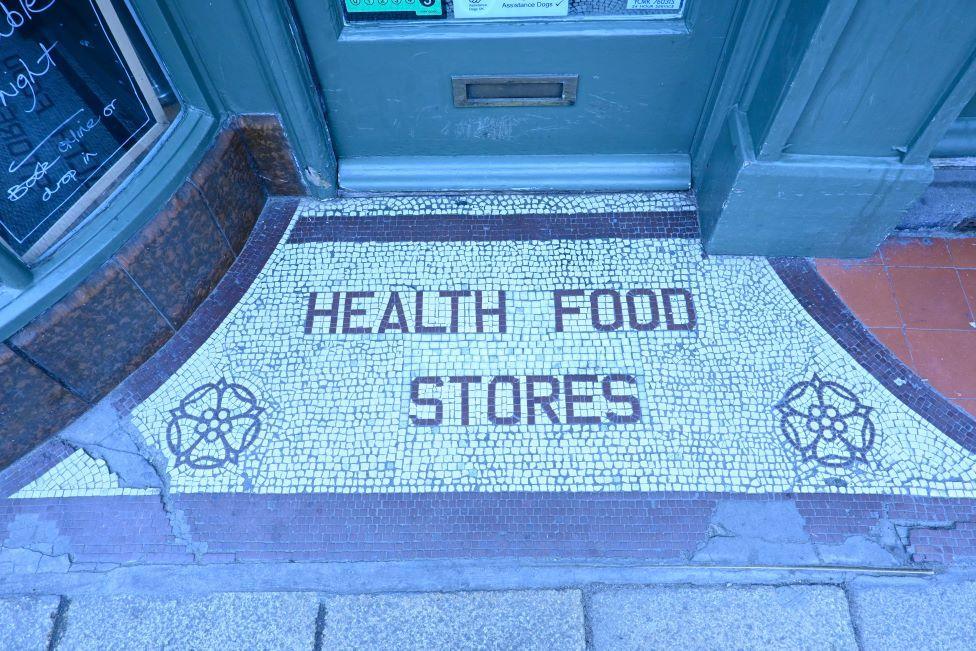
This sign on Gillygate is at the site of the city's first health food shop
There are four signs on Gillygate, including a stunning mosaic in the doorway of what is now a restaurant.
It was York's first health food shop and opened in 1938.
Ms Wilsons said it would have served the "old-school vegans of York" and focussed on providing vegetarian fare, but also herbal cosmetics and alternative medicines.
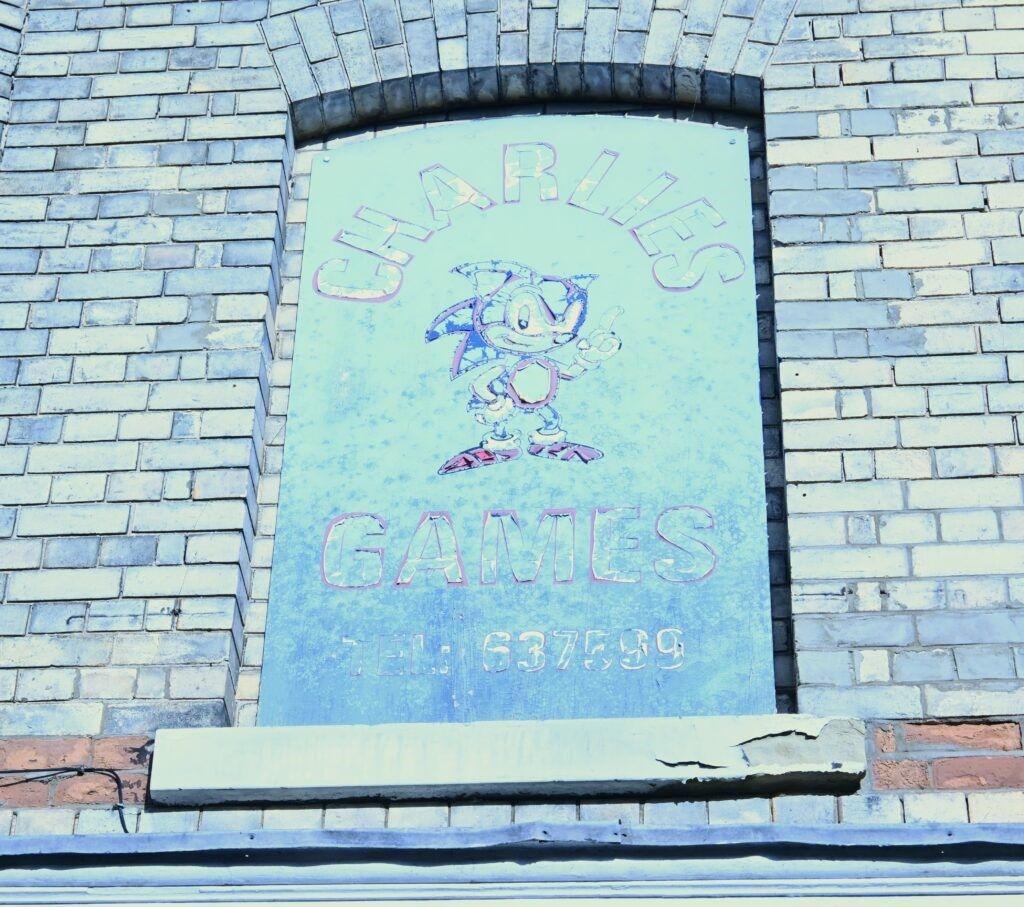
Not all signs relate to forgotten Victorian businesses including this one that records the early days of computer gaming
Dr Mitman and Ms Wilson said not all the signs they have recorded date from centuries ago.
They point to one advertising Charlie's Games on Wolsley Street, featuring 1990s video game character Sonic the Hedgehog
It was a place where you could go and try out the latest games before buying your new favourite.
Sonic was released in 1991, and Dr Mitman and Ms Wilson believe the owners later sold up and moved to Spain.
The pair have said the project so far has generated a great deal of interest, with people drawing their attention to other hidden signs on the city's streets.
You can find other stories like this as part of BBC Radio York's Secret North Yorkshire series.
Follow BBC Yorkshire on Facebook, external, Twitter, external and Instagram, external. Send your story ideas to yorkslincs.news@bbc.co.uk, external.
Related topics
- Published18 March 2023
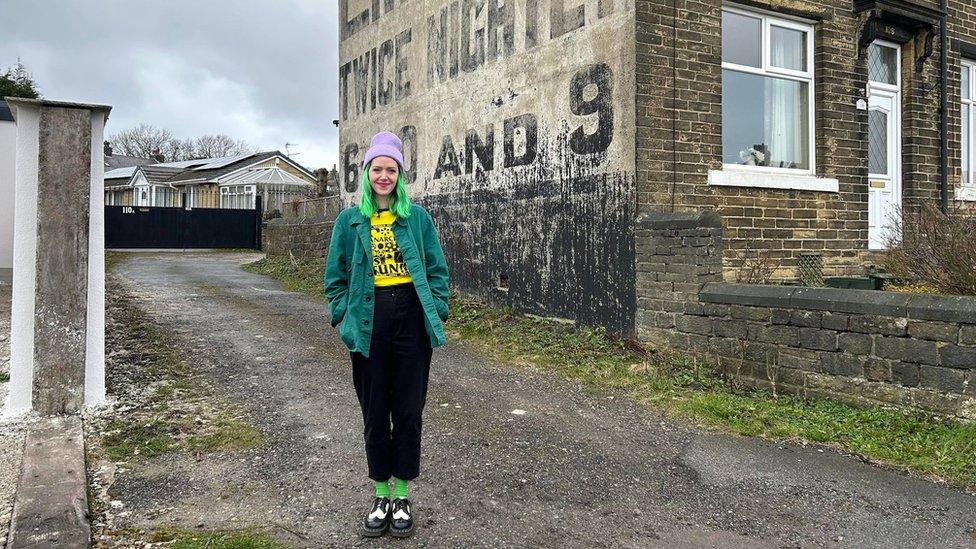
- Published2 March 2014
- Published18 November 2023
